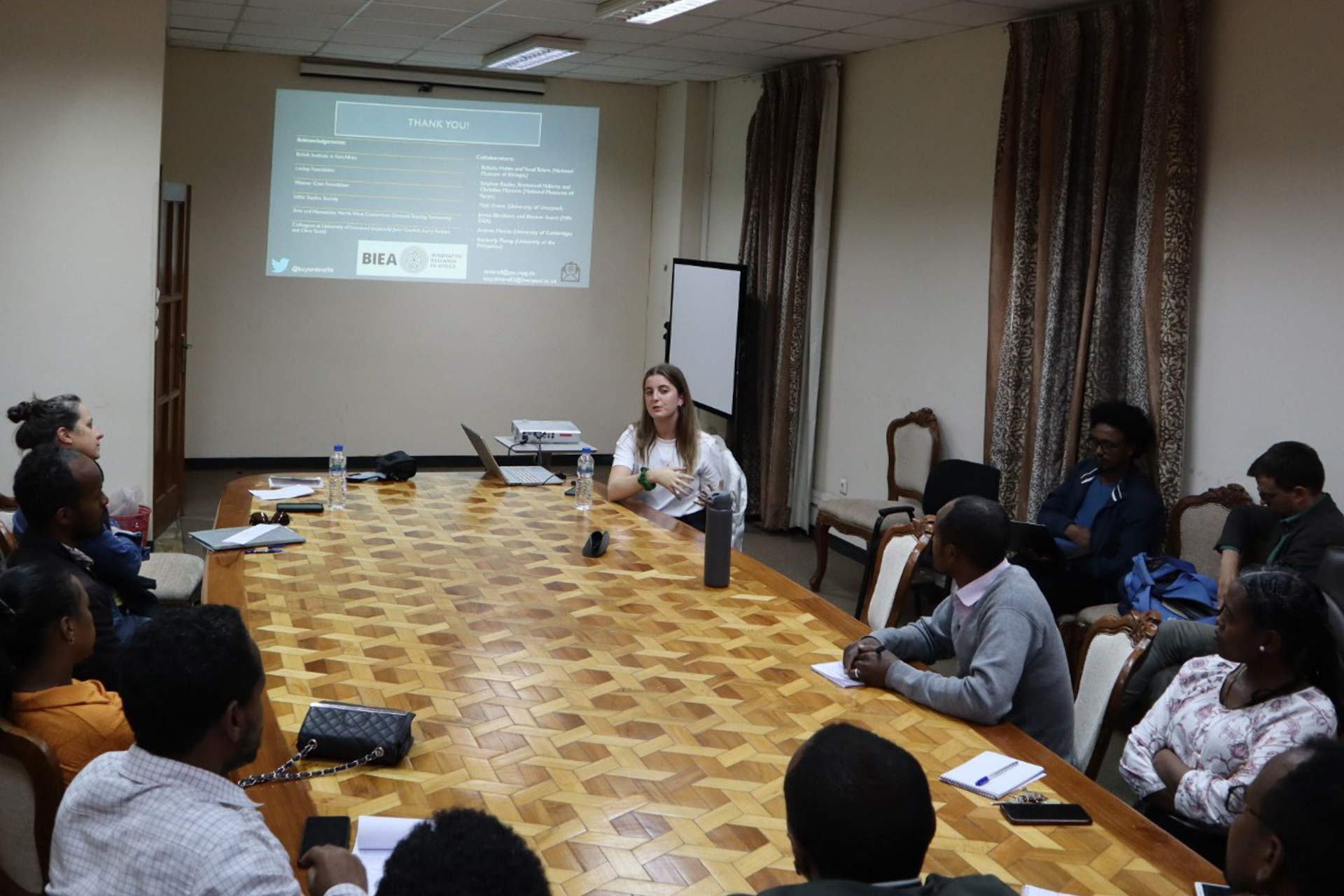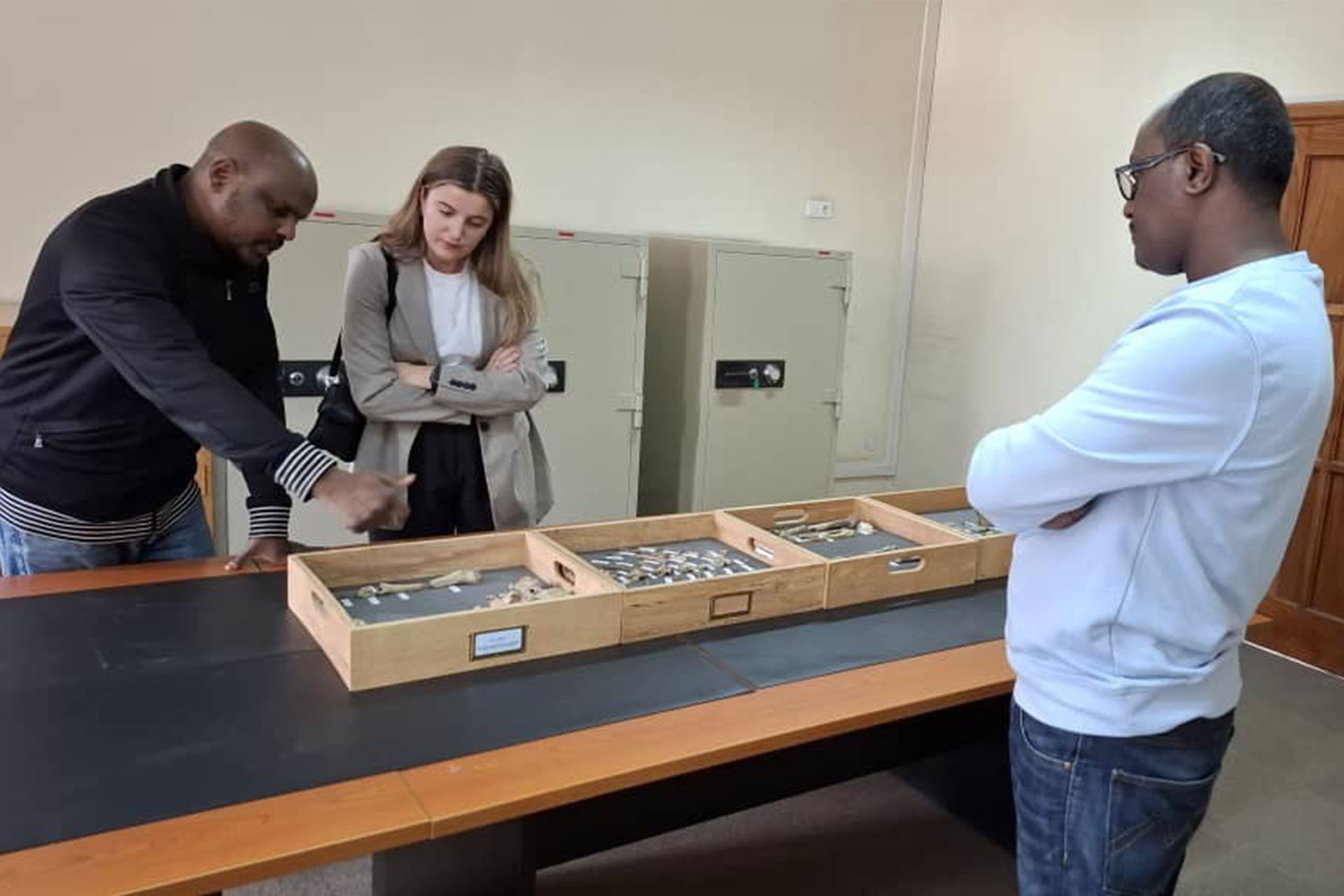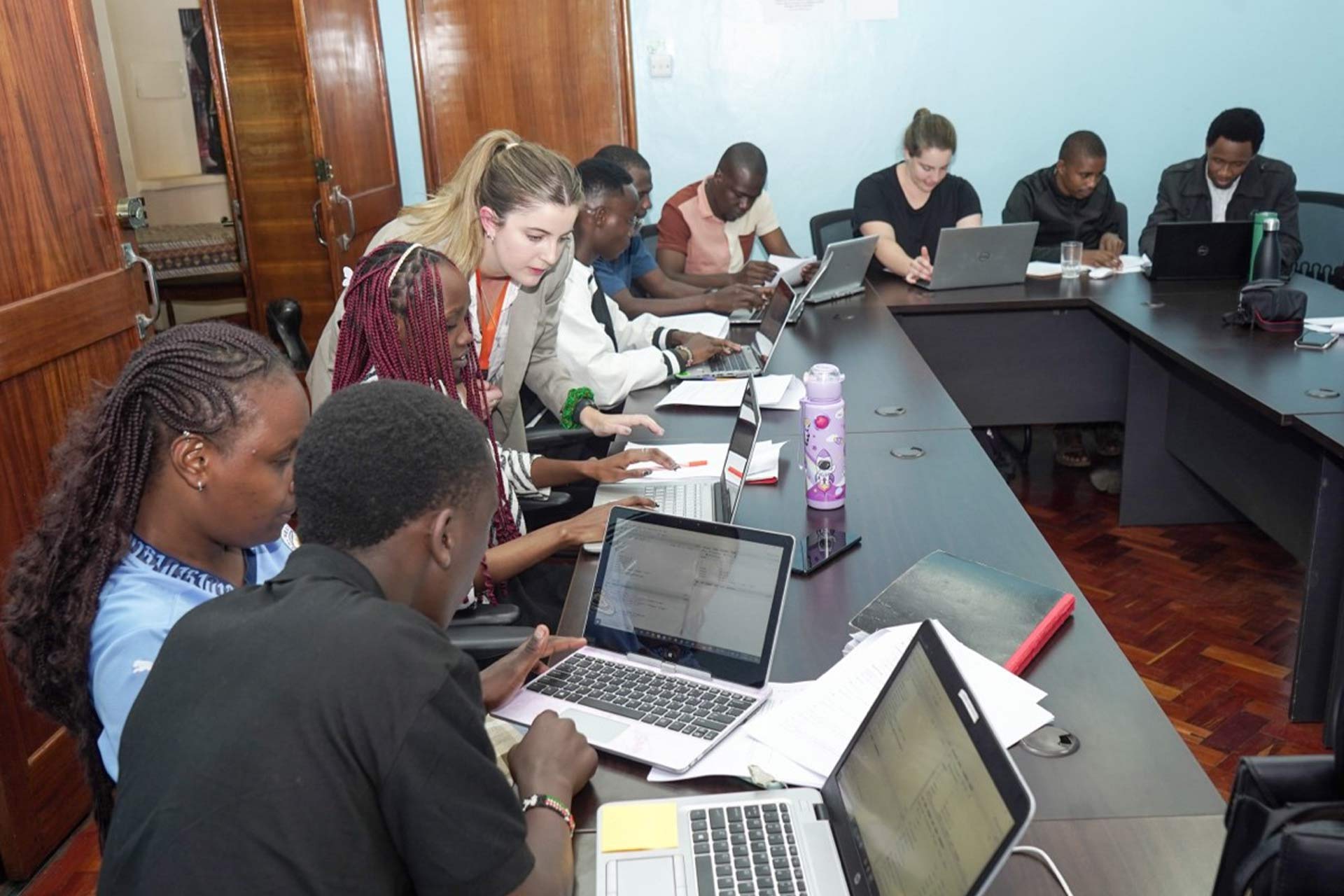
Dr Lucy Timbrell from the Human Origins Group was recently awarded a ‘Bringing Research Home’ Grant from the British Institute in Eastern Africa (BIEA). This scheme allows researchers who have studied Eastern Africa as part of their PhD to return to the region to disseminate their results and build new collaborations.
Her doctoral research at the University of Liverpool investigated palaeoenvironmental and archaeological diversity during the eastern African Middle Stone Age (the cultural phase increasingly associated with the emergence of our species, Homo sapiens).
Dr Lucy Timbrell started her PhD during the COVID-19 pandemic, which prevented her from travelling to eastern Africa for her project. However, she built networks virtually with researchers working in the countries she studied. Together, they collaboratively collected data on eastern African Middle Stone Age lithic points, a key component of the early Homo sapiens stone toolkit. Read about her experience below.
For two weeks in September and October, I was fortunate to visit Ethiopia and Kenya to carry out a programme of dissemination and capacity-building activities, funded by the BIEA.
Ethiopia
My first stop was at the Ethiopian Heritage Authority in Addis Ababa, where I gave a talk on my PhD research. My PhD was carried out in collaboration with Ethiopian archaeologists Dr Behailu Habte and Yosef Tefera, who I got to meet in person for the first time. I was even given the opportunity by the curators to meet the original Lucy (known as Dinkʼinesh locally), the famous hominin Australopithecus afarensis fossil!
Meeting Lucy the famous hominin fossil! With Sahleselasie Melaku and Behailu Habte at the National Museum of Ethiopia:

Over the following days, we worked on developing new collaborative projects on archaeological material housed at the Ethiopian Heritage Authority. Following this, I will be co-advising Yosef on his master's dissertation project, which involves analysing stone tools (lithics) from a famous Middle Stone Age site in Ethiopia, Omo Kibish.
Yosef Tefera sorting Ethiopian Middle Stone Age lithics for his master's project:

Nairobi
I then flew to Nairobi, Kenya, where I provided a free one-day training workshop to a small group of students who are interested in applying geometric morphometric methods in their research. For this workshop, the students were trained using the data collected for my PhD on eastern African points. I then presented my PhD research in a hybrid talk at the BIEA as part of their Graduate Forum.
Lucy providing training on geometric morphometrics in Nairobi at the British Institute in Eastern Africa:

Impact
This experience offered me an invaluable opportunity to disseminate and discuss the findings from my PhD with local scholars and students in eastern Africa, which was especially fulfilling considering that I could not physically travel to the region during my PhD.
Additionally, it was a great chance for me to give back to the institutions I had been working with, provide training and mentorship for African students, and develop new collaborative projects with both my existing network and beyond.
Discover more about Lucy Timbrell on her staff profile.
Read the articles in which Lucy and her collaborators published their results and approach in Azania: Archaeological Research in Africa and Archaeological and Anthropological Sciences.